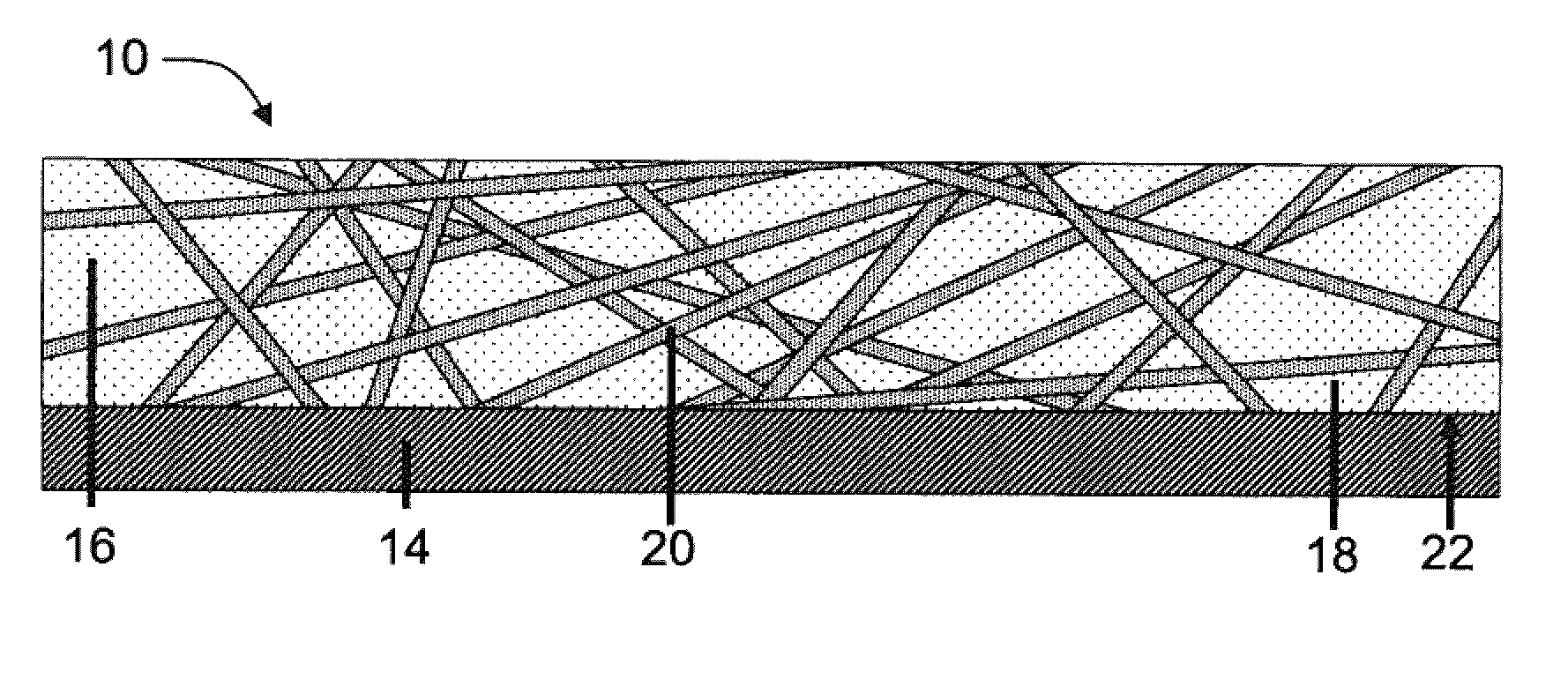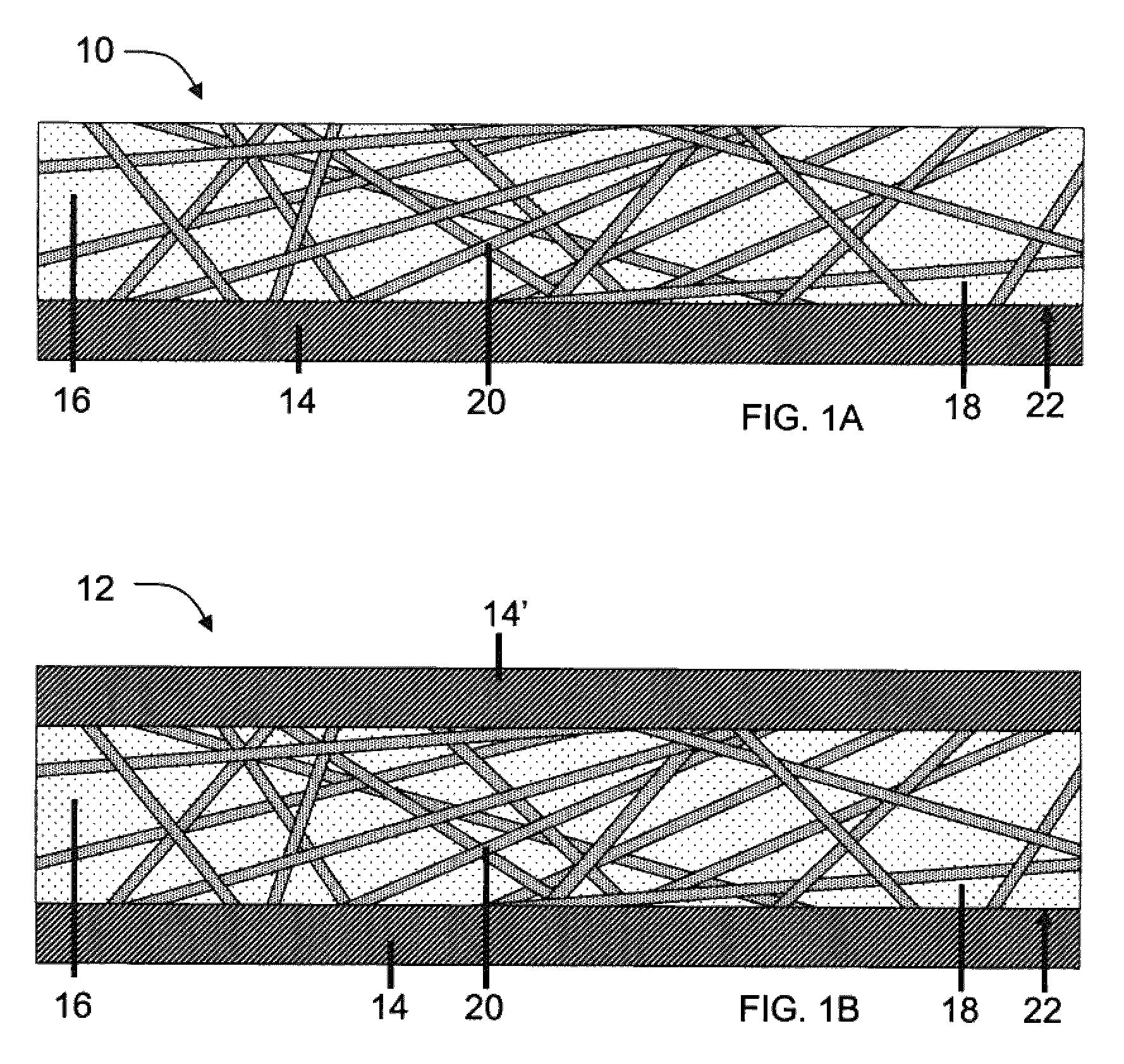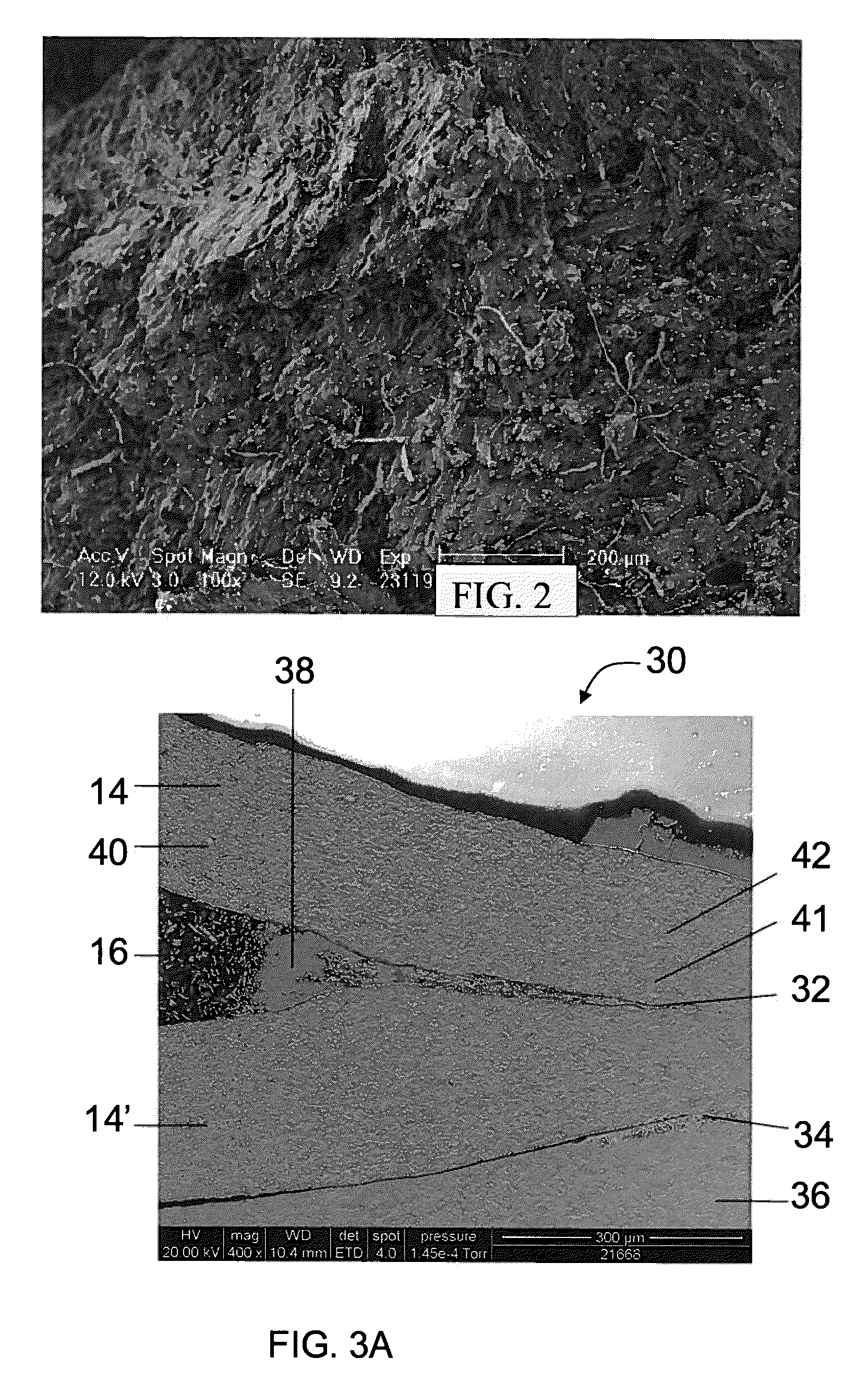Formable light weight composites
a composite material and light weight technology, applied in the field of composite materials, can solve the problems of specific technical problems, inconvenient assembly, and inability to support the face sheet over the length of the cell,
- Summary
- Abstract
- Description
- Claims
- Application Information
AI Technical Summary
Benefits of technology
Problems solved by technology
Method used
Image
Examples
example 1
[0134]The core material for the light weight composite is prepared by melt blending about 45 g nylon 6 and about 72 g stainless steel fibers having an average diameter of about 3-10 μm and an average length of about 2-4 mm in a Brabender Plastograph mixer at 260° C., with a speed of about 20 rpm. The nylon 6 has a density of about 1.142 g / cm3 and the steel has a density of about 7.9 g / cm3. After mixing for about 60 minutes, the admixture is removed from the Brabender mixer. Thus prepared, example 1 contains about 18.8 volume % steel fibers and about 81.2 volume % nylon 6 and has a density of about 2.411 g / cm3.
example 2
[0135]A core material is prepared using the same method as for Example 1, except the weight of the stainless steel fiber is about 102 g and the weight of the nylon 6 is about 40 g. Thus prepared, the admixture contains about 26.9 volume % steel fibers and about 73.1 volume % nylon 6 and has a density of about 2.962 g / cm3.
example 3
[0136]A core material is prepared using the same method as for Example 1, except the weight of the stainless steel fiber is about 48 g and the weight of the nylon 6 is about 53.5g. Thus prepared, the admixture contains about 15 volume % steel fibers and about 85 volume % nylon 6 and has a density of about 2.157 g / cm3.
PUM
| Property | Measurement | Unit |
|---|---|---|
| tensile strain rate | aaaaa | aaaaa |
| Tm | aaaaa | aaaaa |
| Tg | aaaaa | aaaaa |
Abstract
Description
Claims
Application Information
 Login to View More
Login to View More - R&D
- Intellectual Property
- Life Sciences
- Materials
- Tech Scout
- Unparalleled Data Quality
- Higher Quality Content
- 60% Fewer Hallucinations
Browse by: Latest US Patents, China's latest patents, Technical Efficacy Thesaurus, Application Domain, Technology Topic, Popular Technical Reports.
© 2025 PatSnap. All rights reserved.Legal|Privacy policy|Modern Slavery Act Transparency Statement|Sitemap|About US| Contact US: help@patsnap.com



